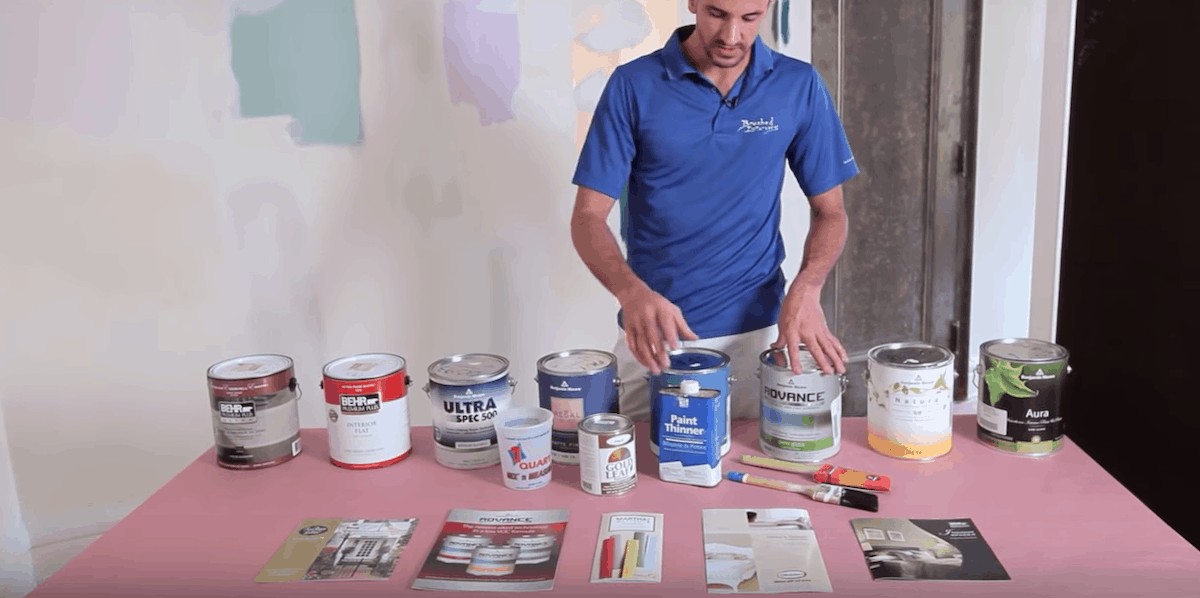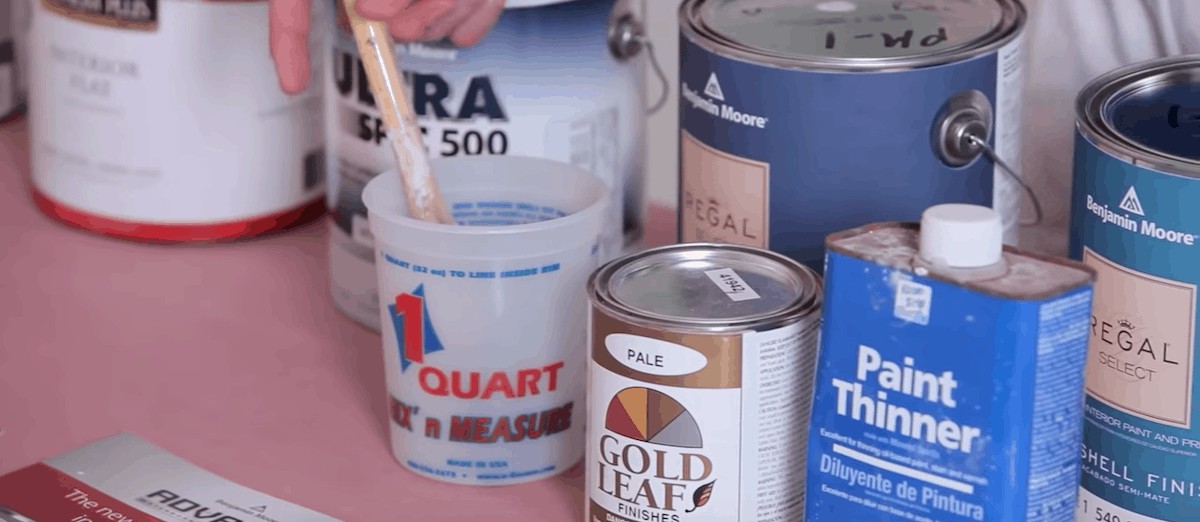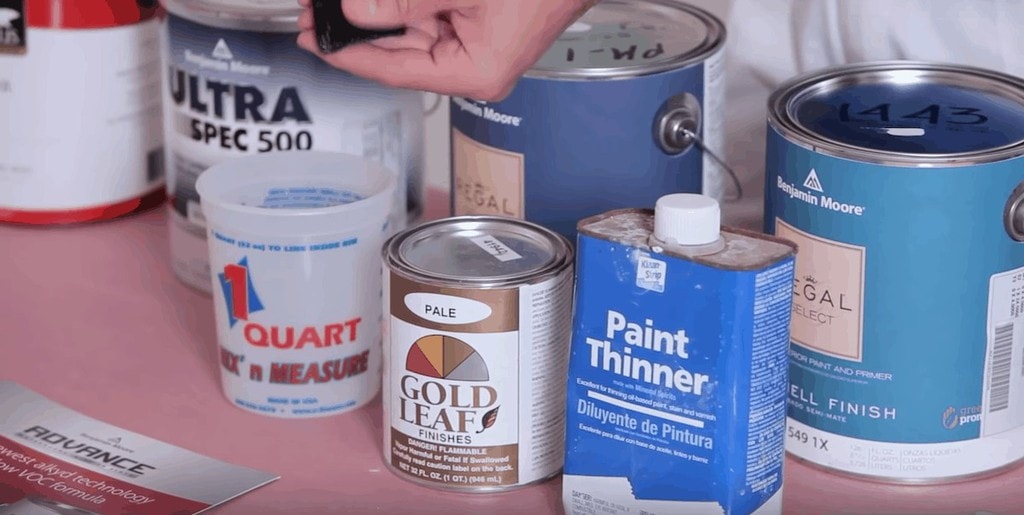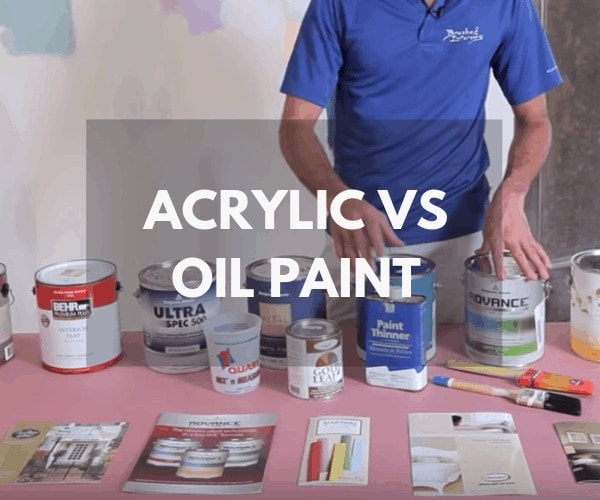
When completing a DIY project, you’re likely going to have to paint your product at some point during the process. Often, people completing projects for the first time will apply a couple of coats of whatever paint they have laying around their house. They fail to recognize that the paint that they use could have a significant impact on the success of the project.
Two of the most common types of paints you’ll find when browsing online or at your local hardware store are acrylic paint and oil paint. Below, you will find acrylic vs. oil paint, this will allow you to determine which type of paint is best for your upcoming project.
Table of contents
Comparing Acrylic and Oil Paint
If you need to add color to your project, you’re likely going to have to choose between acrylic and oil paint. The option that you choose will significantly impact the result of your project.
Acrylic Paint
Manufacturers make acrylic paint by suspending pigment in acrylic polymer emulsion. The paint is initially water-soluble. However, once the paint dries, it becomes water-resistant. Thus, acrylic paint could be useful if you plan to paint something that you’ll use outdoors, like deck paint. Acrylic paint tends to dry very quickly, often within fifteen minutes.
Acrylic paint has been around since the 1930s. Acrylic resin was first introduced in the early 1930s. German manufacturers turned the resin into paint. The first acrylic paint became available commercially in the 1940s.
Today, one of the most common types of acrylic paints that you’ll find are latex house paints. These paints traditionally contain:
- Binder
- Pigment
- Water
- Filler
As mentioned, because acrylic paint is waterproof, it could be worthwhile to use outside. For instance, you’ll find that the best exterior latex house paints are 100 percent acrylic. Paint that is 100 percent acrylic could be a bit pricy, but it could prove to be much more longer-lasting than hybrid or less pure options.
More tips: Acrylic paints
Acrylic paints are also worthy of consideration because of their durability. Although acrylic paints have not been around long enough to confirm this, lab testing indicates that acrylic paints can go up to 200 years without fading.
However, you may notice that the colors change when the paint dries. It may take a few coats for you to understand how drastic this change is. The severity of the change could also depend on the quality of your paint. For most DIY projects, however, the change in color should not be severe enough to cause obvious problems.
Acrylic paints stand out because of how safe they are to use. The paints do not smell, nor are they toxic. The safety that acrylic paints offer could be useful for two reasons. First and foremost, they’re excellent for use around children. Second, they are ideal when painting in a confined space or tight quarters, since you won’t have to worry about inhaling fumes.
Lastly, you should know that you’ll need to be mindful when using acrylic paint brushes. Because the paint dries so quickly, you’ll need to make sure that you clean your gear as soon as you’re finished. If you’re doing something like painting a bedroom for your child, taking a break for lunch could end up rendering your brush useless if you wish to use other colors.

Oil Paint
Manufacturers make oil paint by suspending pigment in a drying oil. Although manufacturers can use various oils, the most common tends to be linseed oil. Oil paints have been around for significantly longer than acrylic paints, dating back to 12th century Europe.
Today, oil paint is one of the most common options used when painting either wood or metal. The paint’s durability makes it well-known for its uses on wood and exposed metal structures, like bridges. Because oil resists water, oil-based paint is ideal for outdoor use.
In addition to the base of the paint, oil paint differs from acrylic paint based on the dry time. Whereas acrylic paint tends to dry within minutes, oil paint could take hours to dry, especially if you use a thick coat.
More Tips: Oil Paints
Oil paints are also different from acrylic paints due to when color change occurs. Oil-based paints will not change color immediately. The paints will dry the same as the original color that you used. However, the oil in the paint can yellow or fade over time. You may need to apply coats every couple of years to maintain the paint’s original color.
Additionally, you’ll also likely need to use paint thinners when working with oil-based paint. The fumes of these paints could overwhelm you quickly and could potentially irritate your skin. You should only work with oil-based paints if you are in a well-ventilated area.
Lastly, the equipment that you’ll use for oil-based paints is considerably more expensive than the tools you would use for acrylic paint. However, oil-based paint products are of much higher quality, and they’ll likely end up lasting much longer than acrylic-based paint products.
Choosing the Right Paints
No matter if you elect to use acrylic paint or oil-based paint, selecting the right product could be overwhelming. Below, we’ve provided a bit of a buyer’s guide for the two different types of paint, so that you can choose the correct product.
Acrylic Paint Buyer’s Guide
The first thing that you’ll likely notice when purchasing acrylic paint is that you can choose from either artists’ quality or students’ quality. Artists’ quality tends to come in an array of pigments and has high permanence ratings. These products could be much more expensive but could end up saving you money in the long run because they’re of much higher quality.
You’ll also want to consider the viscosity of the acrylic paint you’re purchasing. Viscosity refers to how thick the paint is. Most household projects will require heavy-body acrylics, which have a thick consistency similar to the ones you’d find in oil paints.
You may also come across fluid acrylics, which have a much thinner consistency. These paints are similar to watercolors and dry almost immediately.
One last thing to consider when using acrylic paint is the binder that the manufacturer uses. The essential thing is to make sure that you use paints with the same binder. Not all acrylic paints are the same, and using paints with different binders could result in poor adhesion or other inconsistencies.
Oil Paint Buyer’s Guide
The thing that should stand out the most when purchasing oil paint is the cost. The cost of oil paints differ based on the types of pigments you’re using. The more pigments in the paint, the more expensive the product will cost. For the average household project, you may not need a paint that is so vibrant. Purchasing oil paint with high pigments could end up being a waste of money.
Another thing you should consider when buying oil paints is the texture of the substances. Some oil paints are smooth, while others come with a grainy-like finish. This could allow you considerable flexibility in your project while providing you with the opportunity to add character to walls in various rooms of your home. Remember that thicker paints will take significantly longer to dry.

Painting Your Project
When it comes time to paint your next project, be sure that you use the best tools. Not only should you make sure that you use high-quality products like edger tools and paint brushes, but you should also ensure that you use the correct paint for the material with which you’re working.
If you plan on working on a small project that doesn’t require much dry time, you may want to consider acrylic paints. Acrylic paints are useful because they adhere to practically any surface. However, be mindful of the fact that the paint dries quickly. Acrylic paints can give you strong edges, but it’s difficult to blend them.
If you’re looking to paint a more complex design, you may want to consider oil paints instead. Because they take so long to dry, oil paints allow you to better-craft your project. Similarly, if you need to blend paints, you may want to consider using oil-based paints.
At the end of the day, the type of paint that you choose will depend considerably on the project that you wish to complete. However, we feel that you may ultimately be better off with acrylic paint. The paint is safe for use around pets and children.
Furthermore, acrylic paint will last for hundreds of years, which reduces the likelihood of you having to reapply the substance. Lastly, acrylic paints tend to be cheaper than oil-based paints. If you don’t need to blend different colors together or are not worried about specific hues or pigments, acrylic paints are in your best interest.
The only reason you should consider using oil-based paint is if you need to create extravagant designs or if you wish to create specific colors. Other than that, the average household project, like painting a bedroom, should turn out just fine if you use acrylic paints. What will you choose? Let us know in the comments.

